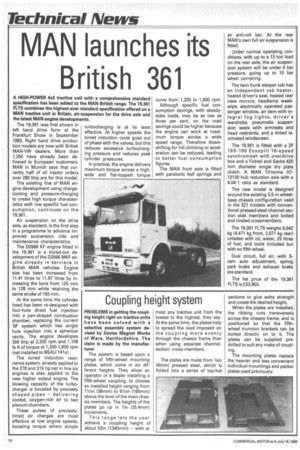Coupling height system
Page 18

If you've noticed an error in this article please click here to report it so we can fix it.
PROBLEMS in getting the coupling height right on tractive units have been solved with a selective assembly system devised by Davies Magnet Works of Ware, Hertfordshire. The claim is made by the manufacturer.
The system is based upon a range of fifth-wheel mounting plates, which come in six different heights. They allow an operator or a dealer installing a fifth-wheel coupling, to choose an installed height ranging from 11/2in (38mm) to 61/2in (165mm) above the level of the main chassis members. The heights of the plates go up in 1in (25.4mm) increments.
This range lets the user achieve a coupling height of about 53in (1340mm) — with al most any tractive unit from the lowest to the highest, they say. At the same time, the plates help to spread the load imposed on the coupling more evenly through the chassis frame than when using separate channelsection cross-members.
The plates are made from 1/4in (6mm) pressed steel, which is folded into a series of top-hat
sections to give extra strength and create the desired height.
When the plates are installed, the ribbing runs transversely across the chassis frame, and is positioned so that the fifthwheel trunnion brackets can be bolted directly on to it. The plates can be supplied predrilled to suit any make of coupling.
The mounting plates replace the heavier and less convenient individual mountings and packer plates used previously.
























































































